Looking to add an outdoor adventure to your bucket list? How about visiting one of America's most awe-inspiring yet overlooked gems — Utah's Capitol Reef National Park?
From the massive golden cliffs to the lush green orchards, this natural paradise will surround you with otherworldly rock formations, brilliant night skies, and pioneer history.
Our guide covers what you need to navigate this rugged wilderness in comfort and safety — hidden trails, seasonal travel tips, and the park's many natural wonders.
Must-See Attractions and Things to Do
Capitol Reef National Park boasts natural wonders and unique attractions. From historic sites to iconic rock formations and scenic trails, the park offers ample must-see destinations
1. Harvest Fruits at Fruita Historic District
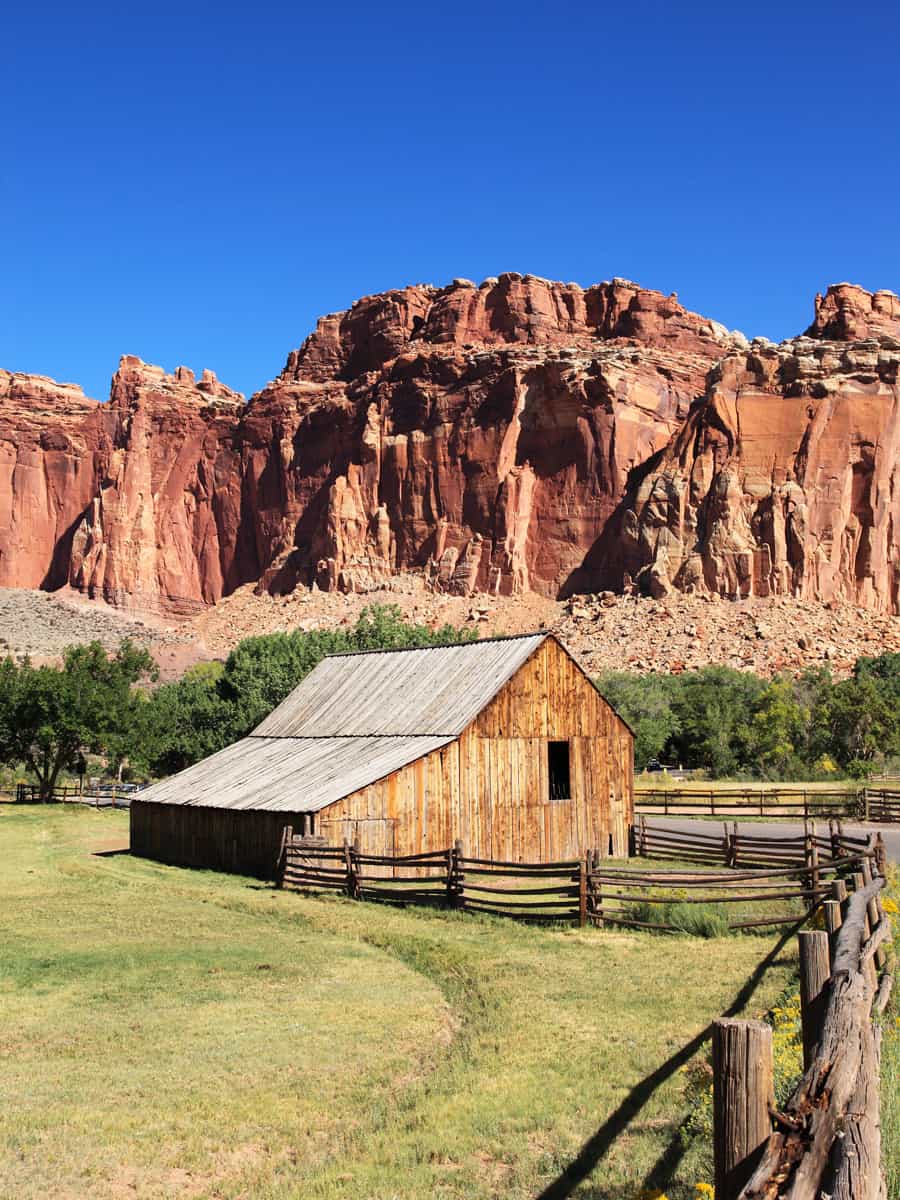
The Fruita Historic District is an oasis in the desert that was once a thriving Mormon settlement, and many of its structures, including the schoolhouse, barn, and the Gifford House, now serve as reminders of its past.
Today, visitors can stroll through orchards where over 2,000 fruit trees bloom — apples, pears, peaches, and cherries.
The National Park Service maintains the orchards, and during harvest season (usually from June to October), guests are welcome to pick and enjoy the fruits on-site for a small fee.
The Gifford House also sells delicious homemade pies and jams, perfect for a picnic under the Utah sky. Remember to check official picking schedules and guidelines to plan your visit accordingly.
2. Capture the Capitol Dome
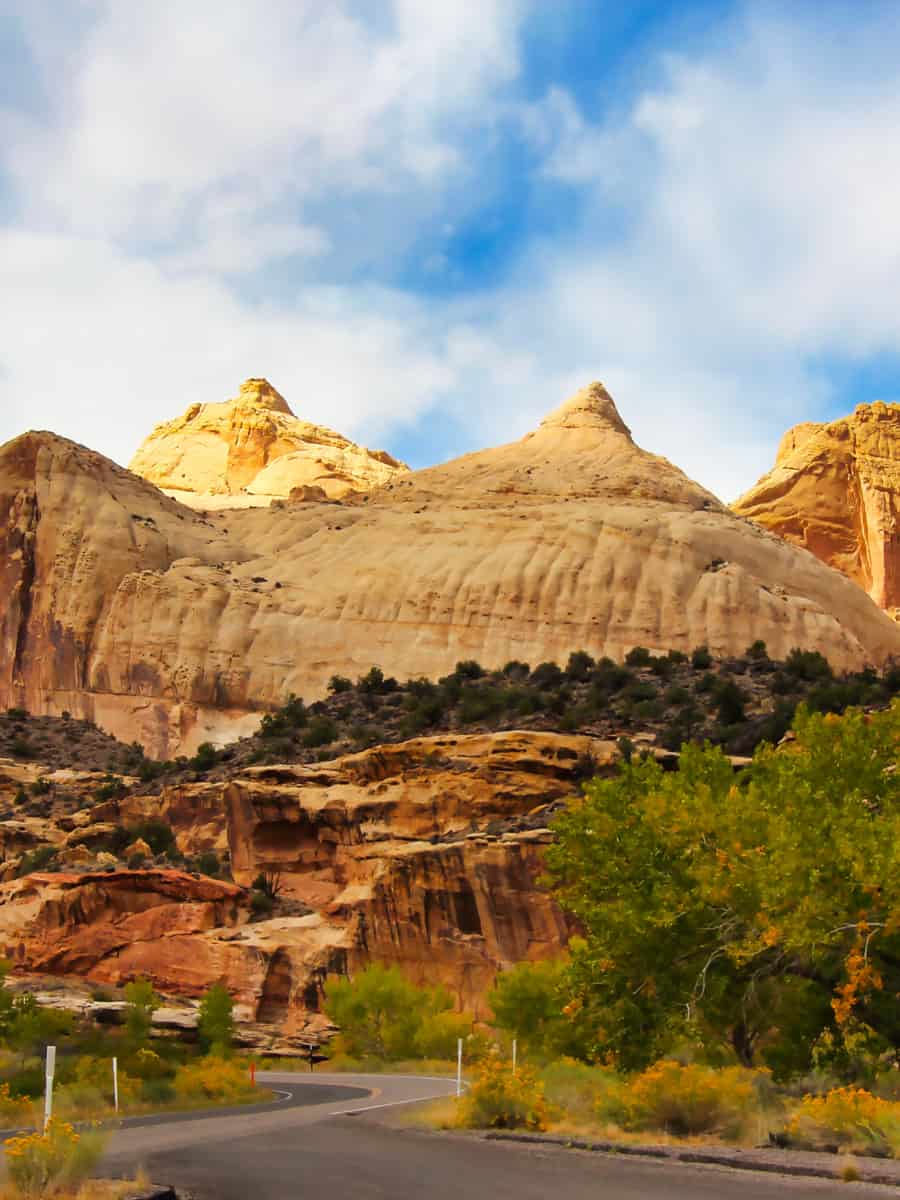
Named for resembling the U.S. Capitol building, the Capitol Dome is an iconic feature of Capitol Reef’s landscape.
This massive dome-shaped rock formation is composed of Navajo Sandstone and stands prominently near the park's main road, making it easily accessible for photography and sightseeing.
A viewpoint near the Visitor Center offers an excellent spot for observing the dome, especially during sunrise or sunset when the rock glows with warm hues. Viewing the Capitol Dome doesn't require hiking, which is ideal for those with limited mobility or time.
3. Hike to Hickman Bridge
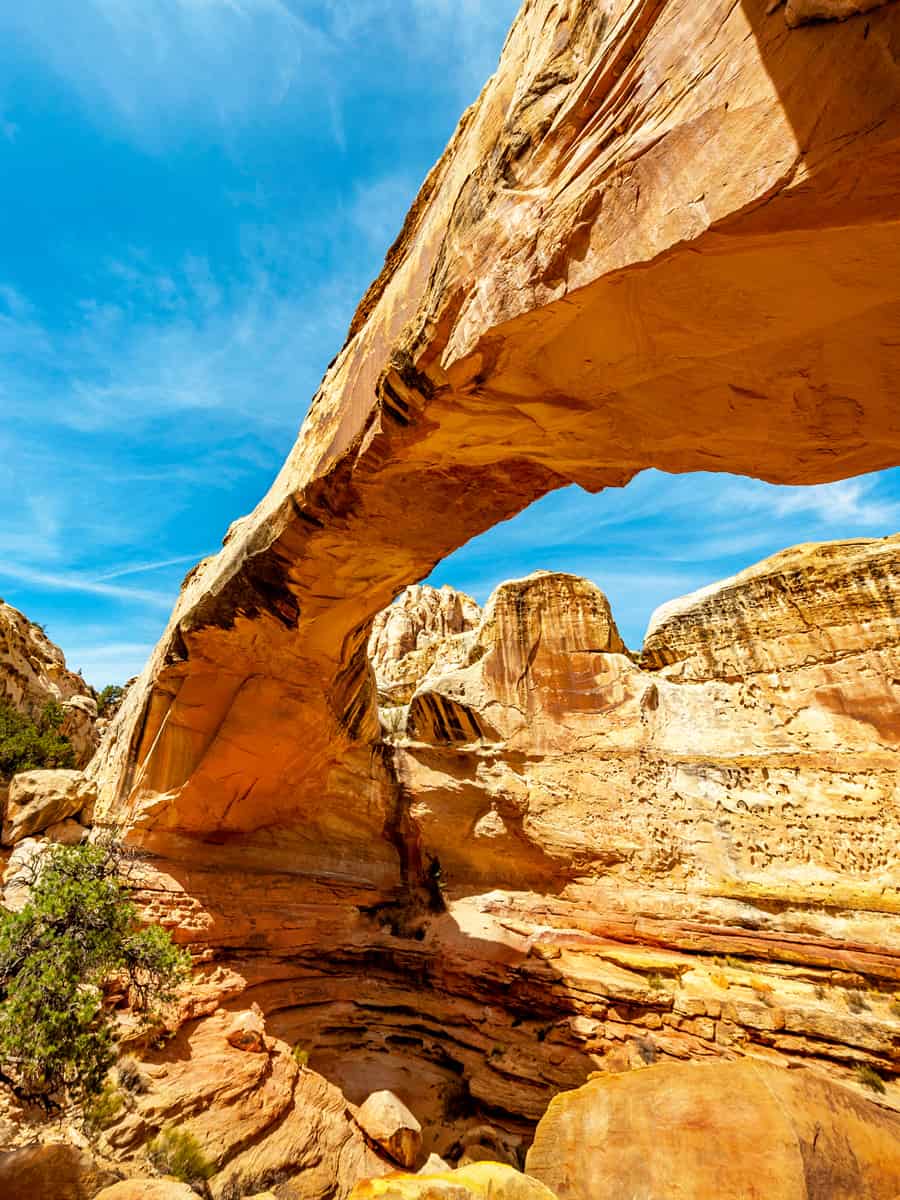
The Hickman Bridge trail is a visitor favorite for its moderate difficulty and rewarding views. This 1.8-mile round-trip hike leads to a natural arch with an impressive span of 133 feet.
Along the way, hikers can also see petroglyphs and the remnants of a Fremont Indian village, adding a cultural dimension to the natural beauty. The trailhead is just a few miles east of the Visitor Center, with available parking and restrooms.
It’s advisable to start this hike early in the morning to avoid the heat and crowds and to bring plenty of water. The park’s official trail guide offers more details on what to expect on this and other hikes.
4. Relish the Views along Scenic Drive
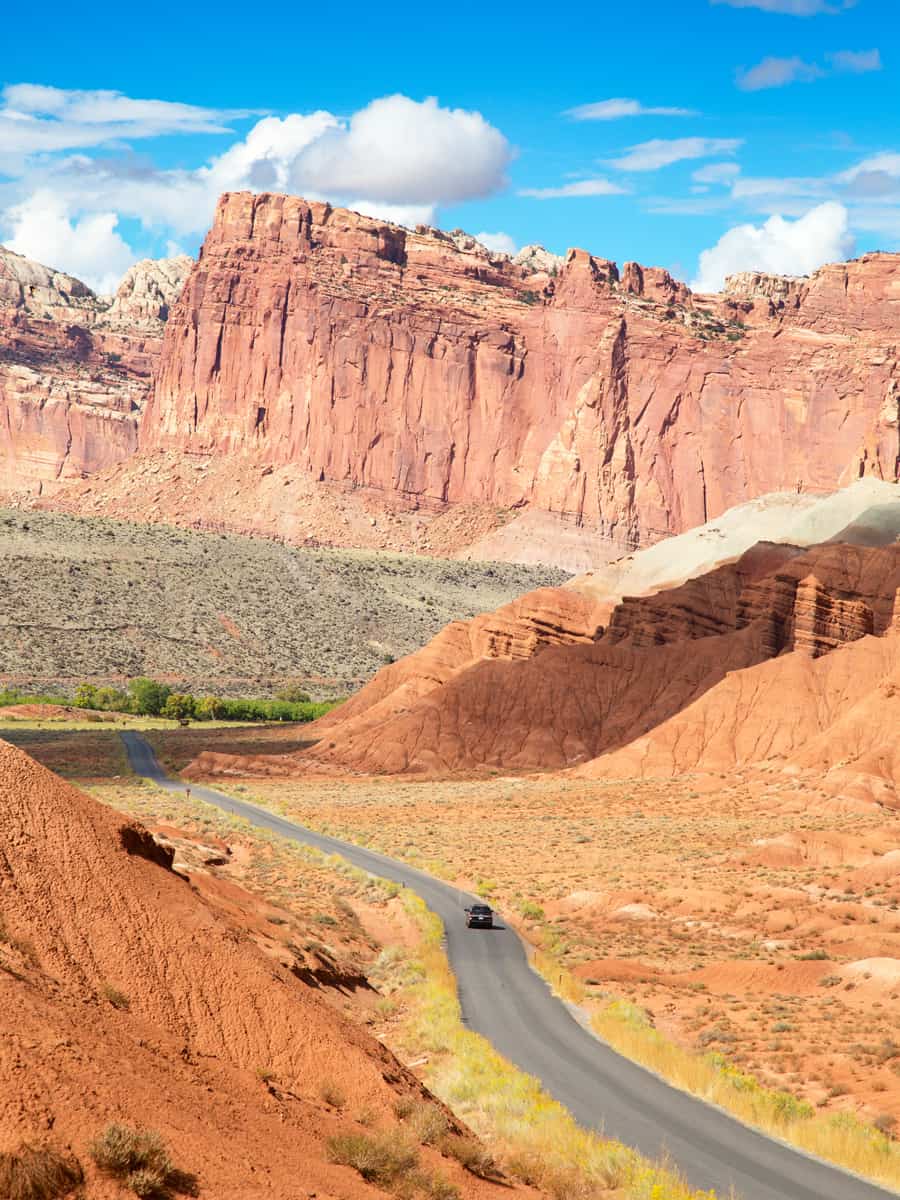
The Scenic Drive in Capitol Reef is a 10-mile route that extends south from the Fruita area, offering access to some of the park's most stunning landscapes.
A small fee is required to drive this road, but the views and access to several trailheads make it well worth it.
You can stop at Panorama Point, Sunset Point, and the Capitol Gorge, each offering unique vistas and photo opportunities.
The road is paved and suitable for most vehicles, though RVs and trailers might find some turns and parking areas challenging. The drive can take one to two hours, depending on how often you stop.
For a well-equipped drive, save our list of road trip tips: 37 Must-Know Road Trip Hacks I Learned from Driving Through 48 States.
Capitol Reef Trails for Every Trekker
Learn more about the hiking opportunities within Capitol Reef National Park; each trail offers a unique perspective on the park’s diverse landscapes. Here’s a look at some of the park’s most popular trails:
1. Capitol Gorge Trail
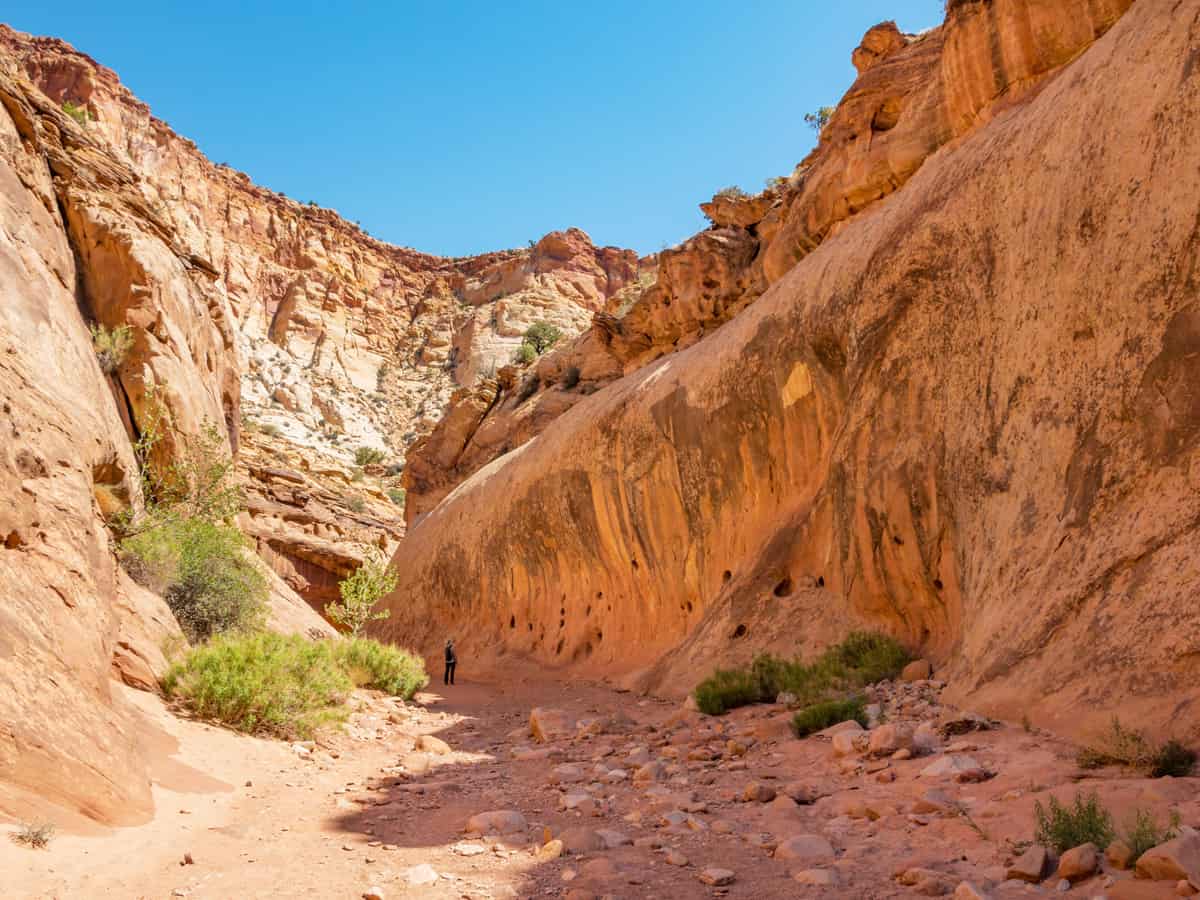
The Capitol Gorge Trail is ideal for a gentle introduction to Capitol Reef's stunning geography. This easy-to-moderate, 1-mile one-way path leads adventurers through a narrow gorge carved by ancient rivers.
As you walk this flat trail, you'll encounter historic pioneer inscriptions and intriguing petroglyphs that hint at the area's rich past. The journey culminates in the Tanks, fascinating natural water pockets supporting desert life.
It's an accessible hike suitable for all ages and skill levels, offering a glimpse into the park's geological and cultural history. Before setting out, check the park’s official guide for any flash flood warnings, especially during rainy seasons.
2. Cassidy Arch Trail
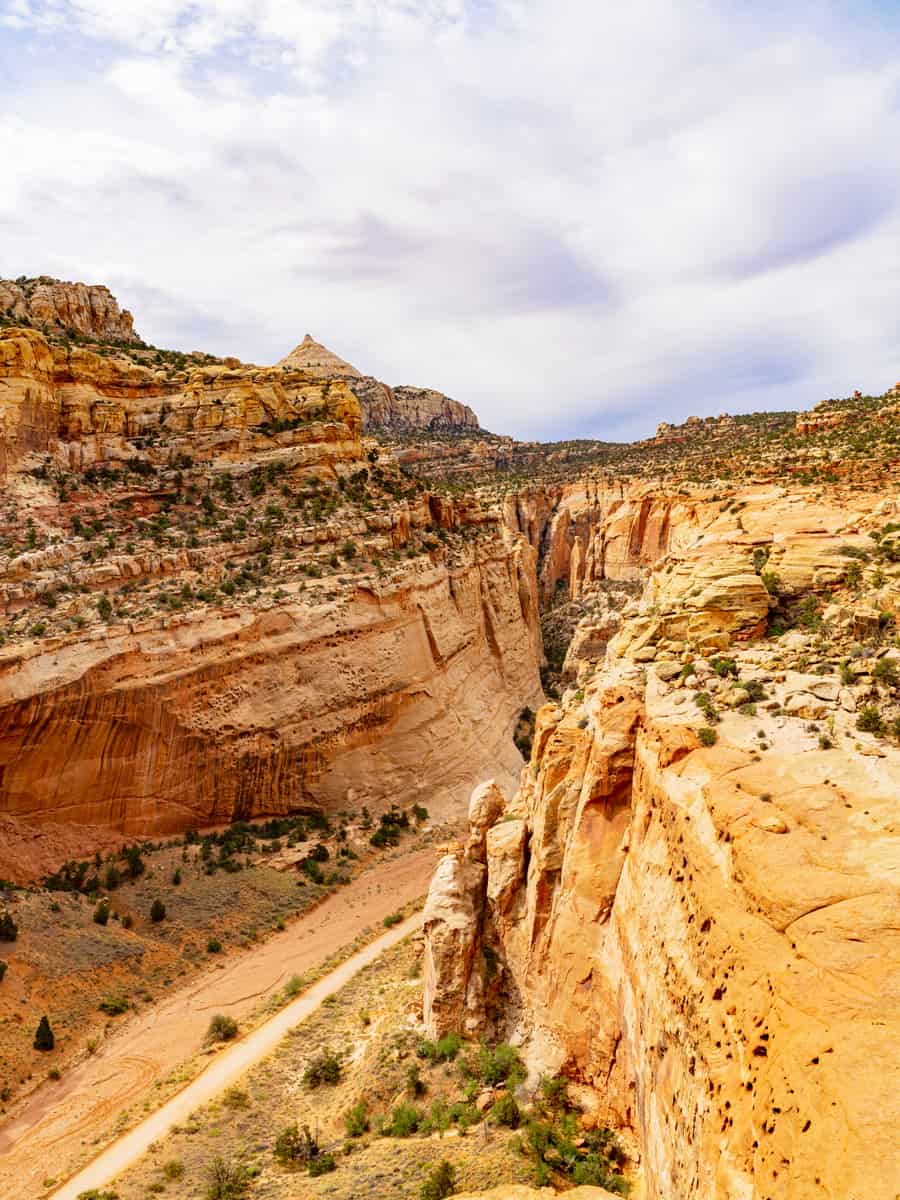
The Cassidy Arch Trail, a moderate to strenuous hike covering 3.4 miles round trip, ascends steeply to unveil the grandeur of Cassidy Arch — named after the legendary outlaw Butch Cassidy.
This trail challenges hikers with a 670-foot elevation gain, leading to a spectacular vantage point above the arch, rewarding the determined with awe-inspiring views of the surrounding canyon.
The terrain here demands sturdy hiking shoes for navigating rocky and uneven paths. Embarking on this trail during the early morning hours helps avoid the daytime heat and positions photographers for the best lighting conditions.
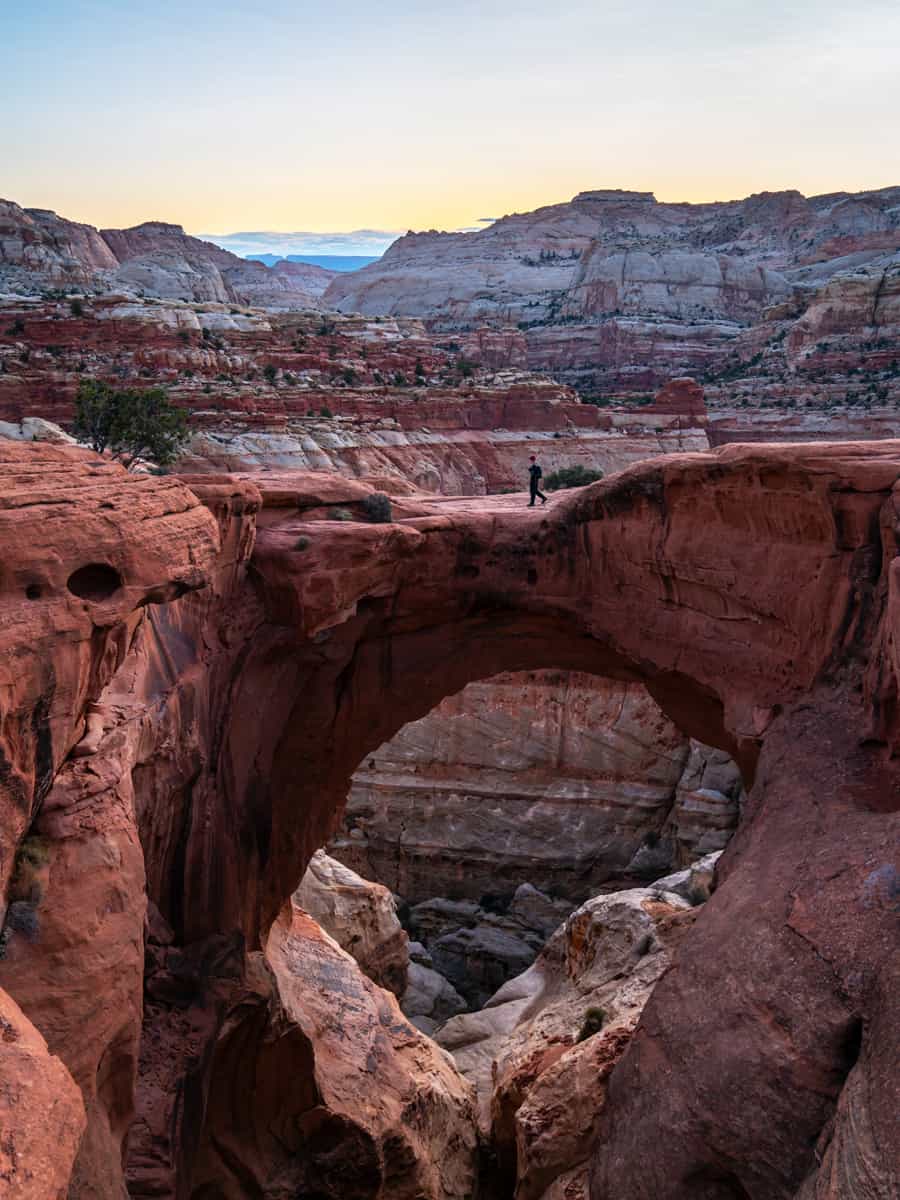
3. Navajo Knobs Trail
For those craving an all-day trek, the Navajo Knobs Trail offers an exhilarating 9.4-mile round-trip journey marked by its strenuous challenge. This trail has expansive views atop the Navajo Knobs, where the park unfolds in a panoramic spectacle.
The significant elevation gain and trail length require a good fitness level, making this hike more suitable for experienced enthusiasts.
Hikers will pass notable landmarks, including the Hickman Bridge trail, en route to the ultimate ascent, where the breathtaking 360-degree vistas of Capitol Reef await.
Given the trail's exposure to the elements, starting early, wearing sun protection, and packing sufficient water and nourishment are critical for a safe and enjoyable experience.
For the latest trail conditions and hiking itineraries, refer to Capitol Reef National Park’s official website.
Meet Capitol Reef's Flora, Fauna, and Geology
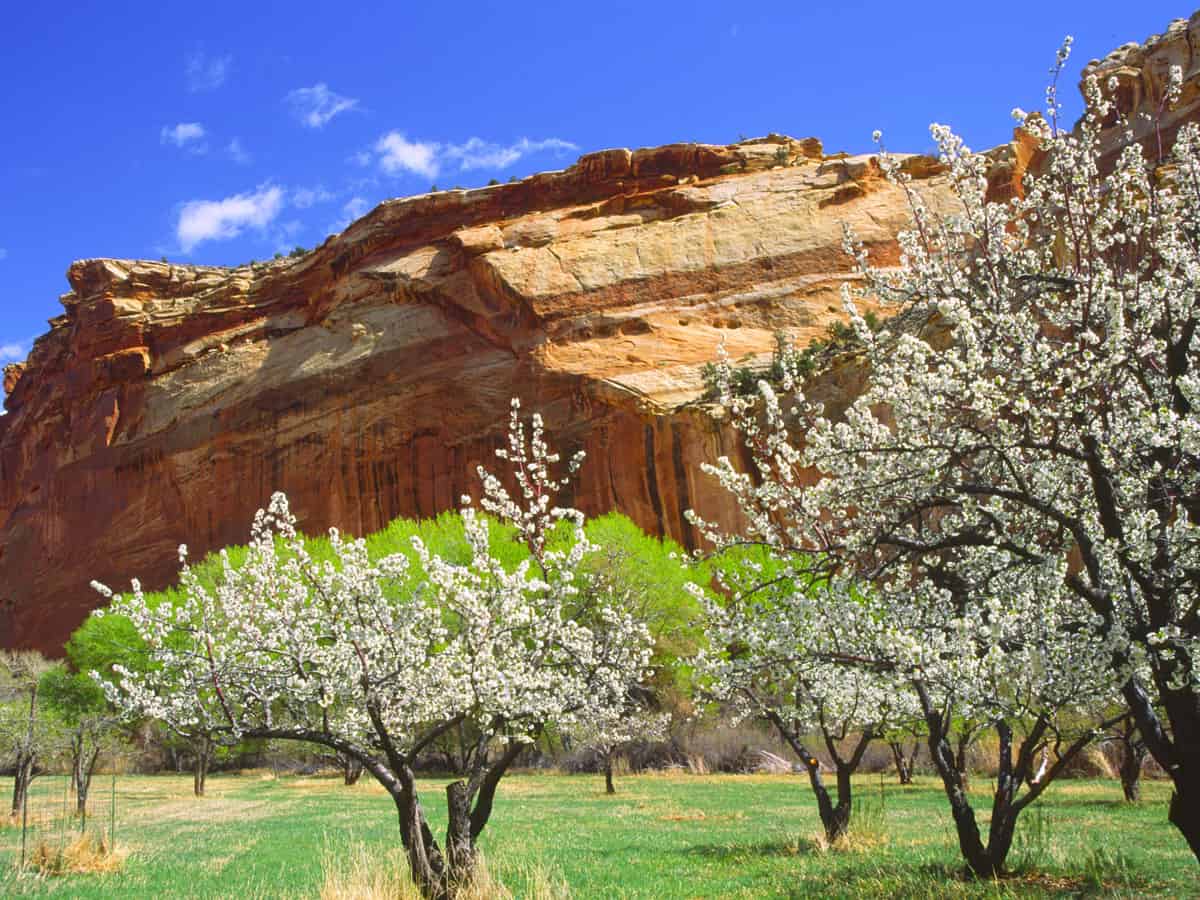
Capitol Reef National Park is a vibrant showcase of desert flora and historic orchards. The rugged landscape is dotted with sagebrush, juniper, and pinyon pine, while springtime ushers in a bloom of desert wildflowers, painting the terrain in vivid hues.
This contrast between desert and cultivated land highlights the adaptability of life in this region. For more on the park's plant life and harvest schedules, the National Park Service's website offers detailed information.
Wildlife in Capitol Reef is as diverse as its landscape, with opportunities to spot mule deer, rock squirrels, and various bird species, including the golden eagle and western bluebird.
The park’s fauna thrives in the desert and riparian zones, allowing enthusiasts to observe these animals in their natural habitats.
Nighttime may reveal the more elusive nocturnal residents, such as ringtail cats. Visitors are advised to keep a respectful distance and refrain from feeding the wildlife, ensuring a safe and natural environment for animals and people.
The geology of Capitol Reef is centered around the Waterpocket Fold, which showcases millions of years of geological history through its cliffs, canyons, arches, and domes.
If you want to understand the park's geology further, the geology page on the official website is an excellent resource.
For the best visitor experience, early morning and late afternoon are prime times for wildlife watching and photography, capturing the park in its best light. Ranger-led programs can enhance your visit by providing expert insights into the park's natural history.
Directions to Capitol Reef National Park
Navigating Capitol Reef National Park requires careful planning, especially given its remote location, which can sometimes confuse GPS systems. Consider traditional maps or follow these directions based on your approach for a more reliable route.
If you're coming from the west on Interstate 70, you should exit at 149, then take Utah State Route 24 (SR-24) west towards Hanksville, continuing for approximately 81.1 miles to the visitor center, which will be on your left.
If you're approaching from the east on Interstate 70, exit at 40 onto Utah State Route 120 south, follow through to Utah State Route 118 north, make a slight right onto Utah State Route 119 east, and finally turn onto SR-24 east, with the visitor center appearing on your right after 63.4 miles.
If you're driving north on Interstate 15, exit at 95 and follow Utah State Route 20 towards US-89, then turn onto Utah State Route 62, and finally onto SR-24 east with the visitor center on the right after 47.1 miles.
Southbound travelers on Interstate 15 should exit at 188 to US-50 East, then take Utah State Route 260 South and continue onto SR-24 East, where the visitor center will be on your right after a total of 74.1 miles from the interstate.
The scenic Utah State Route 12 offers an alternative route connecting US-89, near Panguitch and Torrey, with SR-24.
This 123-mile highway is not just a route but an experience, traversing through Dixie National Forest, past Bryce Canyon National Park, and cutting through Grand Staircase-Escalante National Monument.
The journey from Bryce Canyon to Capitol Reef typically takes about three hours, though travelers should be mindful of winter conditions that can make this scenic drive challenging.
Always check current road conditions and consult the Utah Department of Transportation's cameras before embarking on this high-altitude route.
It’s important to note that some GPS or cell phone directions may inaccurately suggest taking South Draw Road from Lower Bowns Campground, an unmaintained path unsuitable for standard passenger cars, RVs, or those unfamiliar with navigating rough terrain.
For visitors driving alternative fuel vehicles, planning your trip with the Department of Energy’s Alternative Fueling Station Locator, using zip code 84775, can help locate refueling stations and contribute to a more sustainable visit.
With Capitol Reef National Park open year-round, every season offers a unique beauty. Still, winter visitors should come prepared with ample layers, sturdy boots, and other essentials for colder weather.
Checking the park's official page is always recommended for the most accurate and up-to-date information. Be better prepared for your Utah road trip by reading our guide: The Ultimate Utah National Parks Road Trip.
When to Visit Capitol Reef National Park
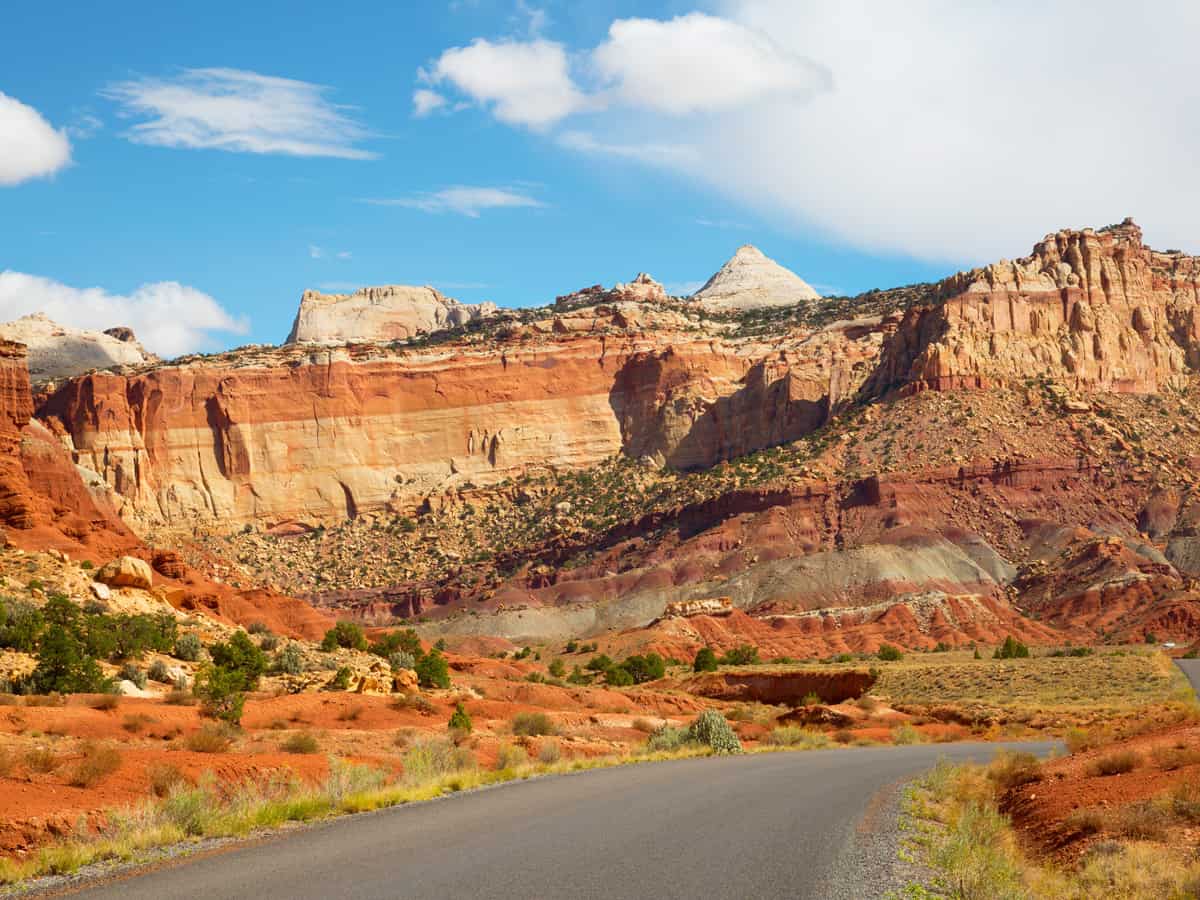
Choosing the best time to visit Capitol Reef is crucial for maximizing your experience. The months from May to September are ideal, with the park fully operational and the weather conducive to exploring.
The mild spring and fall temperatures offer perfect hiking conditions, while the summer presents a warmer challenge, ideal for those ready to brave the heat with proper precautions. Winter visitors are treated to a quiet, snow-draped landscape, though some facilities may be limited.
The park's operating hours and seasons page provides up-to-date information on what to expect during your visit.
Accessibility at Capitol Reef National Park
Capitol Reef National Park's Visitor Center provides wheelchair access, including a ramped entrance, reserved parking, and accessible restrooms.
Also, the orientation movie is closed-captioned, and narrated descriptions of exhibits are available through the NPS Audio Description Tours app, with tactile exhibits also offered.
For camping, the Fruita Campground offers five wheelchair-accessible sites, which can be reserved from March to October. Picnicking is made convenient with reserved accessible parking and restrooms at the Picnic Area along Scenic Drive.
Many scenic overlooks and wayside exhibits throughout the park are accessible to wheelchair users.
Trails such as the boardwalk to the Fremont Culture petroglyphs along Utah Highway 24 and parts of the Fremont River Trail near Gifford House are wheelchair-accessible, ensuring everyone can explore the park's wonders.
Ranger programs at the Fruita Campground Amphitheater are accessible via a lighted path from reserved parking, and talks at various locations are wheelchair-accessible. However, hikes may not be due to terrain.
Furthermore, service animals, as defined by the ADA, are welcomed throughout the park. Owners are encouraged to identify their service animals to prevent misunderstandings, as falsely portraying pets as service animals is subject to federal prosecution. For more information, visit their Accessibility Page.
Safety Tips for Your Capitol Reef National Park Visit
Safety during activities like hiking, climbing, and driving in Capitol Reef National Park relies on sound judgment, preparation, and awareness. Safety incidents are rare, but it's essential to be prepared.
Flash floods, dehydration, heat exhaustion, and hypothermia are significant risks, especially in the desert environment.
You should monitor weather conditions, carry enough water, hike during cooler times, and be prepared to recognize and address symptoms of heat-related illnesses or hypothermia.
Canyoneering and rock climbing are exciting but inherently risky activities. Proper research, knowledge of escape routes, and consideration of group abilities are crucial.
You should also stay on designated trails, drive cautiously, and adhere to park regulations regarding firearms and fruit picking.
Remember to have the Ten Essentials with you and check out additional safety resources for a fun and secure visit to Capitol Reef. For comprehensive safety guidelines, consult the safety page on the park's official website.
Start Your Capitol Reef Journey to Discovery
As you embark on your Capitol Reef adventure, embrace every moment of its nature, history, and scenic wonder.
Pack plenty of water and sun protection to keep you safe under the desert sun. Stop frequently along the Scenic Drive to immerse yourself in the views. Wake early to catch a fiery sunrise over the sandstone domes.
We hope our guide has shown Capitol Reef's beauty and intrigue and inspired you to discover your own unforgettable experiences within this wilderness paradise. Wherever your journey leads, let the memories of Capitol Reef nourish your soul until you return.
